Red bottle to know
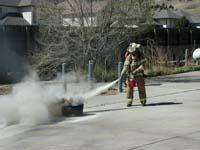
Computers, papers, oils... Everything around you can burn. Maybe you too, at a certain temperature. As explained in Ray Bradbury's book Farenheit 451, paper, for example, burns at that temperature. Imagine that the set of paper you've thrown into recycling burns and you don't have water nearby. Undoubtedly, extinguishers are the best means of extinction in the absence of water. However, despite knowing the theory about extinguishers, it is essential to know how to use them to face the situation.
If taken and reviewed in the hands, several main chapters in the extinguisher stand out. The first and obvious is the bottle. It is the container with an extinguisher that will extinguish the fire. Inside there will be dust extinguisher. The bottle always has a valve that blocks or measures the flow of this extinguisher. Outside, a label with general information for everyone. The latter is also part of the extinguisher.
The extinguisher is taken in the hand and it is verified that we know how to handle it in case of fire. Fires occur every year. 30% of the fires are caused accidentally; they occur when burning bushes, throwing cigars badly extinguished anywhere, badly extinguishing the fires that occur during leisure time, etc. They are ultimately the fruit of human irresponsibility. They are also naturally originated, for example by rays, but very few.
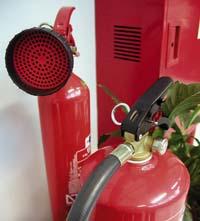
Whatever the type of one or the other, fuel (e.g. wood, plastic, gasoline, scrub...), comburent (in general, air oxygen) and activation energy or heat are the essential elements for fire production. The sum of these three components produces fire. On the contrary, if one of these elements is removed, the fire is extinguished. There are several ways to do this: reduce concentration by removing or dissolving the fuel, removing heat or reducing temperature and preventing the resulting vapors from mixing with oxygen from the air -- using a blanket, for example, or directly with the extinguisher.
Type of fire, extinguisher
The most commonly used fire extinguishers are those containing carbon dioxide, mixtures of various powders and halogenated hydrocarbons. Depending on the fire that occurs, a fire extinguisher or another will be used. Because not all fires are equal.
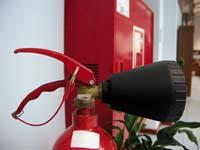
Fire types are generally classified according to fuel: Class A fires are solid materials. In most cases, these materials are organic and usually form embers when burned. The combustion of liquids such as gasoline, paints, oils, etc., produces type B fires. When gases are burned (methane, propane, butane...) and metals (sodium, magnesium, potassium...) are of classes C and D, respectively. Finally, there are class E or electric fires. This differentiation is very important and it is essential to be clear.
Suppose, therefore, that your computer burns you. So you have a fire type E. Carbon dioxide, for example, is easily penetrable into the fire and conducts no electricity. The most suitable type E electric fire extinguisher is therefore carbon dioxide. In addition, it does not emit waste that can damage the electrical circuit. It is also very effective in case of fire of metals of electrical nature. In addition, carbon dioxide extinguishers are characterized by having a trumpet shaped filter. Even with flexible tubes, at the end of these flexible tubes there is a special filter, the trumpet. In fact, CO 2 goes below zero to 70ºC and can cause skin burns by contact. Cold also burns often. The strong output expansion cools the gas.

Similar to the previous ones but without trumpet are extinguishers with mixture of several powders. They are very efficient but produce great damage, especially in electrical appliances. In addition, they have a small obstacle: these powders are somewhat suffocating.
The following, fire extinguishers containing halogenated hydrocarbons, have many uses. In general, except for type A and D fires, everyone else is able to turn them off. However, these compounds in the chlorofluorocarbons group damage the ozone layer, so experts seek new solutions to prevent environmental damage. Who would say that these compounds exist in fire extinguishers... The use of these extinguishers is currently prohibited. However, they are still used in older installations.
We also have fire hydrants. Fire mouths must be equipped with water. They are very simple. They have flexible tube, pressure control pressure gauge and spear. There are two types: Rigid and flexible. The main advantage of the first is that it can be used without completely releasing the rigid tube. It seems silly, but in an emergency it is not so easy to completely release the tube. The second, completely soft and flexible, requires a total release for use.
Water, universal extinguisher
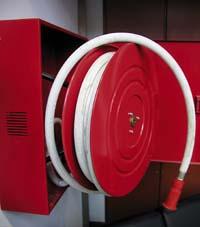
Water can also turn off B-type fires or liquids. But not all. If the burning liquid is polar (like alcohol), there will be no problem turning it off. However, if it is an apolar liquid, such as oil, the flames may expand.
Moreover, the water pressure at the outlet of the flexible tube is high and in some cases this pressure can disperse the burning liquid and increase the fire instead of turning it off. That is why, often, when the fire is very localized, for example when it is in a paint boat, the ideal is to drown it with a blanket.
And don't say when the fire occurs around plugs, cables, etc., just in case you don't use it. Because you risk getting an electric shock.
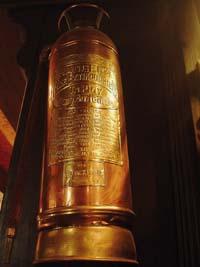
Do not forget the foam used by firefighters in general, product of the mixture of special powders with water. Foam is mainly used in firefighting liquids. Although to a lesser extent, it can also be used when solids are burned.
Imagine that you are a company employee and that an oil tank burns at high temperatures. To turn this off, not all the extinguishers around you will be enough. That's why it's best to call firefighters. Its foam, in addition to cooling the medium, will produce a top layer that will prevent physical contact between oil and oxygen. Thus, in the short term the fire will be completely extinguished.
All these extinguishers are manual. But there are also stable extinguishers. Automatic fire detectors are currently installed in different areas, both above a temperature and if flames are observed.
As important as having a fire extinguisher. You also have to be cautious and relaxed. Try to extinguish the fire from a distance at first and, as it goes out, go slowly, without endangering yourself. If you ever have to resist the fire, be careful.
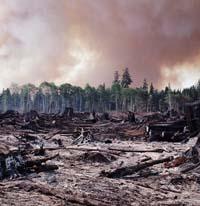
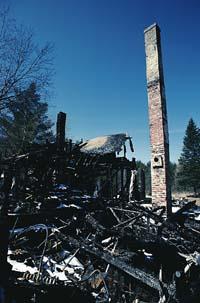
Buletina
Bidali zure helbide elektronikoa eta jaso asteroko buletina zure sarrera-ontzian











